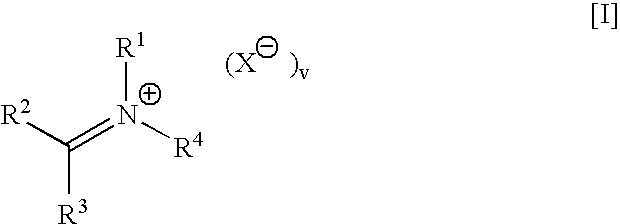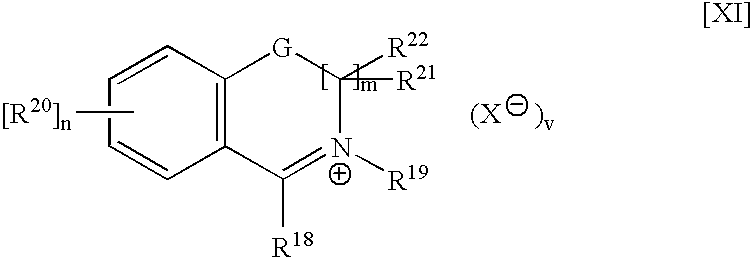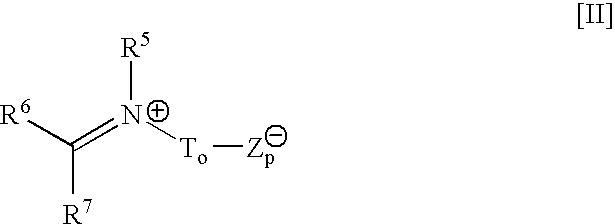Controlled availability of formulation components, compositions and laundry methods employing same
a technology of formulation components and compositions, applied in detergent compositions, detergent compounding agents, detergent bleaching agents, etc., can solve the problems of reducing the effectiveness of oxygen bleaching agents, affecting the efficiency of laundry appliances, and affecting the color of fabrics, so as to improve the bleaching performance and reduce the decomposition of organic catalysts
- Summary
- Abstract
- Description
- Claims
- Application Information
AI Technical Summary
Benefits of technology
Problems solved by technology
Method used
Image
Examples
case 1
[0403] If Amin>0.9 Amax, rerun the test to reset the value of dbleach. In this new test, the aliquot removed at tQ is treated as before except it is stirred for additional 1 min increments until such time as the absorbance Amin≦0.9 Amax. The minimum number of minutes of DBS stirring required to satisfy the absorbance condition defines the new dbleach for the final test protocol implementation. If, however, a dbleach greater than 30 minutes is required [i.e., if 10% bleaching is not achieved in 30 minutes, even at the point where δA is greatest (when the organic catalyst is present in its highest concentration)], the OCCP is not shown by Protocol I to be within the boundaries of this invention, however, the OCCP may be found to fall within the boundaries of this invention by Protocol II and / or Protocol III.
case 2
[0404] If Aminmax, rerun the test to reset the value of wOCCp. The OCCPS is prepared from 50% of the default quantity of the OCCP. This process is repeated only until the absorbance condition described in Case 3 is met (e.g., reduce OCCP from 1.0 g to 0.5 g, then if necessary from 0.5 g to 0.25 g, etc.).
case 3
[0405] If 0.25 Amax≦Amin≦0.9 Amax, the test run serves as the final test protocol implementation. Under these conditions, dbleach and wOCCP do not need to be changed from the default values used.
[0406]Test protocol 1: The initial step is the preparation of the OCCPS as described. The time at which the OCCP is added to the deionized water to form the OCCPS is set to t=0. At each of the aliquot removal times (tf or tdd), a 100 mL aliquot of the OCCPS is withdrawn, immediately filtered during the period from t=(tf or tdd) to t=(tf or tdd+0.25 min) to remove undissolved OCCP, and the filtrate added all at once at t=(tf or tdd+0.50 min) to 10.0 mL of CDS. A 1–5 mL aliquot, C, of the resulting DBS is withdrawn immediately prior to the absorbance determination (data acquisition). Absorbance of C is measured at the λmax at the conclusion of dbleach.
[0407]The time at which the absorbance determination (data acquisition) of aliquot C is measured is defined as tC. Therefore, it is required tha...
PUM
 Login to View More
Login to View More Abstract
Description
Claims
Application Information
 Login to View More
Login to View More - R&D
- Intellectual Property
- Life Sciences
- Materials
- Tech Scout
- Unparalleled Data Quality
- Higher Quality Content
- 60% Fewer Hallucinations
Browse by: Latest US Patents, China's latest patents, Technical Efficacy Thesaurus, Application Domain, Technology Topic, Popular Technical Reports.
© 2025 PatSnap. All rights reserved.Legal|Privacy policy|Modern Slavery Act Transparency Statement|Sitemap|About US| Contact US: help@patsnap.com



